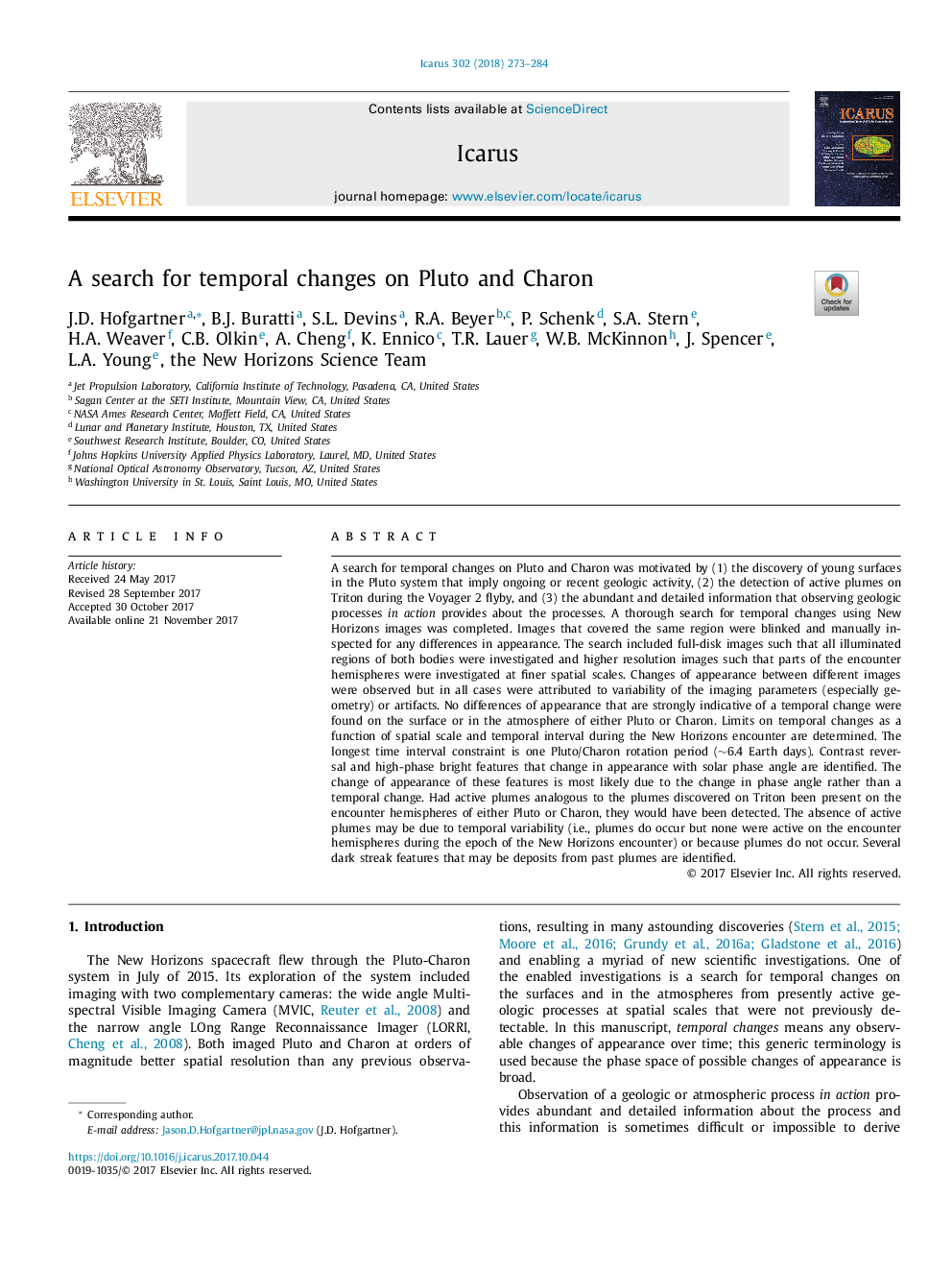| Article ID | Journal | Published Year | Pages | File Type |
|---|---|---|---|---|
| 8134558 | Icarus | 2018 | 12 Pages |
Abstract
A search for temporal changes on Pluto and Charon was motivated by (1) the discovery of young surfaces in the Pluto system that imply ongoing or recent geologic activity, (2) the detection of active plumes on Triton during the Voyager 2 flyby, and (3) the abundant and detailed information that observing geologic processes in action provides about the processes. A thorough search for temporal changes using New Horizons images was completed. Images that covered the same region were blinked and manually inspected for any differences in appearance. The search included full-disk images such that all illuminated regions of both bodies were investigated and higher resolution images such that parts of the encounter hemispheres were investigated at finer spatial scales. Changes of appearance between different images were observed but in all cases were attributed to variability of the imaging parameters (especially geometry) or artifacts. No differences of appearance that are strongly indicative of a temporal change were found on the surface or in the atmosphere of either Pluto or Charon. Limits on temporal changes as a function of spatial scale and temporal interval during the New Horizons encounter are determined. The longest time interval constraint is one Pluto/Charon rotation period (â¼6.4 Earth days). Contrast reversal and high-phase bright features that change in appearance with solar phase angle are identified. The change of appearance of these features is most likely due to the change in phase angle rather than a temporal change. Had active plumes analogous to the plumes discovered on Triton been present on the encounter hemispheres of either Pluto or Charon, they would have been detected. The absence of active plumes may be due to temporal variability (i.e., plumes do occur but none were active on the encounter hemispheres during the epoch of the New Horizons encounter) or because plumes do not occur. Several dark streak features that may be deposits from past plumes are identified.
Related Topics
Physical Sciences and Engineering
Earth and Planetary Sciences
Space and Planetary Science
Authors
J.D. Hofgartner, B.J. Buratti, S.L. Devins, R.A. Beyer, P. Schenk, S.A. Stern, H.A. Weaver, C.B. Olkin, Cheng A., K. Ennico, T.R. Lauer, W.B. McKinnon, J. Spencer, L.A. Young, the New Horizons Science Team the New Horizons Science Team,
